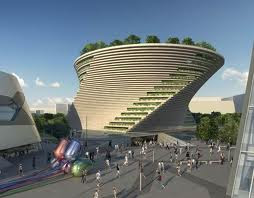That is the verdict of Deloitte Access Economics in its most recent Tourism and Hotel Market Outlook report.
The report highlights the changing face of Australia's tourism market as strong income growth in rising Asian economies, particularly China and India, gradually more drives growth in international visitor arrivals.
China has already overtaken Japan to become Australia's third-largest inbound visitor market behind New Zealand and the UK with yearly growth averaging 13 per cent over the past decade. And it has surpassed the UK as Australia's largest market in terms of visitor nights and expenditure.
"By 2014, expenditure from the China source market is predictable to exceed the UK and NZ markets combined," the Deloitte report states.
Hotel occupancy rates in Sydney are the highest in Australia and expected to raise from 85 per cent in 2012 to 88 per cent in 2014.
By comparison, room occupancy rates on the Gold Coast are estimate to pick up from 65 per cent last year to 68 per cent by the end of 2014.
"This development in occupancy rates is largely due to fairly flat performance in room rates, which are expected to only grow generally in line with inflation over the next three years."
The report highlights the changing face of Australia's tourism market as strong income growth in rising Asian economies, particularly China and India, gradually more drives growth in international visitor arrivals.
China has already overtaken Japan to become Australia's third-largest inbound visitor market behind New Zealand and the UK with yearly growth averaging 13 per cent over the past decade. And it has surpassed the UK as Australia's largest market in terms of visitor nights and expenditure.
"By 2014, expenditure from the China source market is predictable to exceed the UK and NZ markets combined," the Deloitte report states.
Hotel occupancy rates in Sydney are the highest in Australia and expected to raise from 85 per cent in 2012 to 88 per cent in 2014.
By comparison, room occupancy rates on the Gold Coast are estimate to pick up from 65 per cent last year to 68 per cent by the end of 2014.
"This development in occupancy rates is largely due to fairly flat performance in room rates, which are expected to only grow generally in line with inflation over the next three years."



















